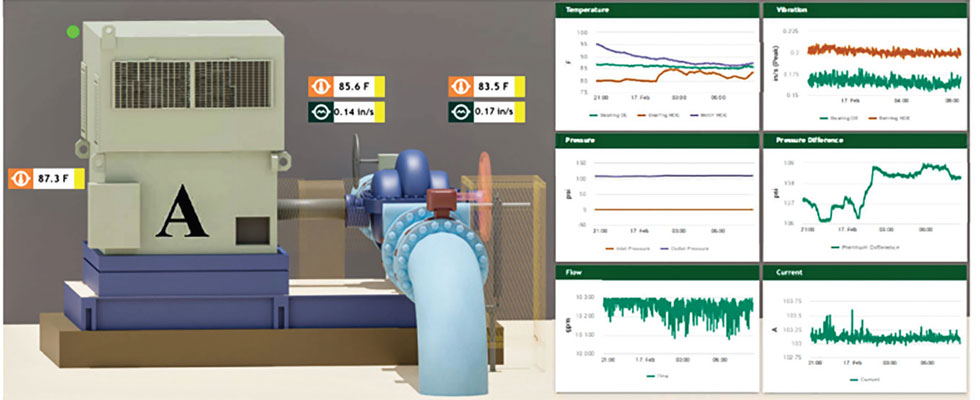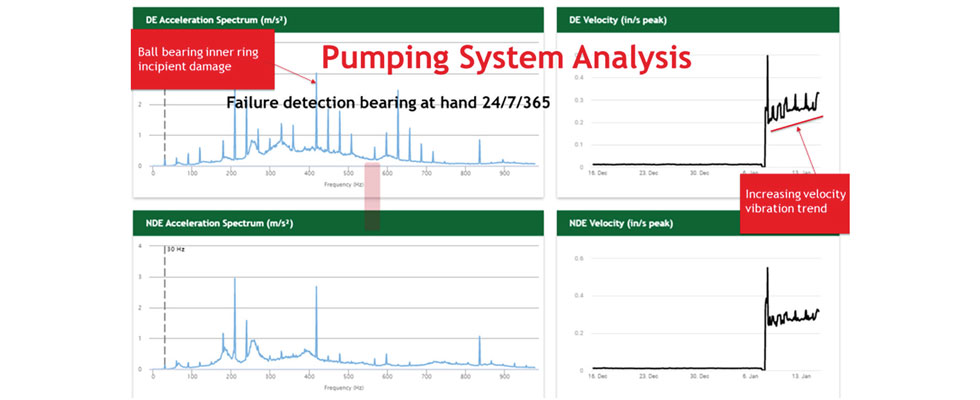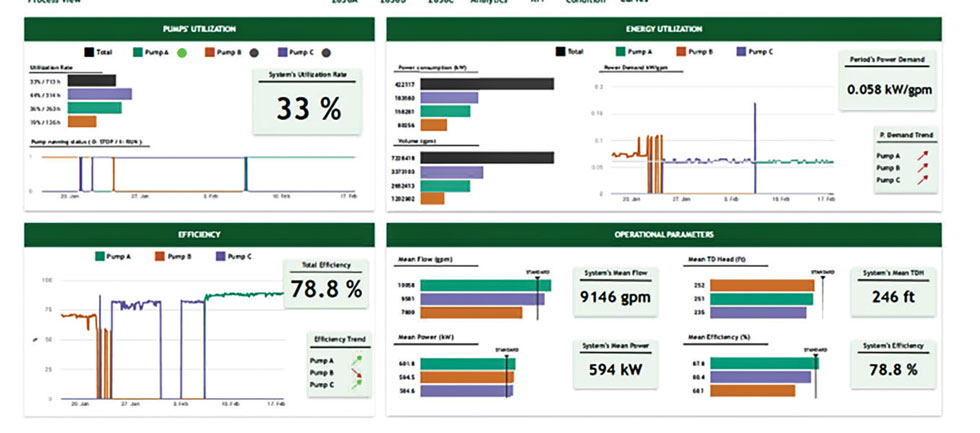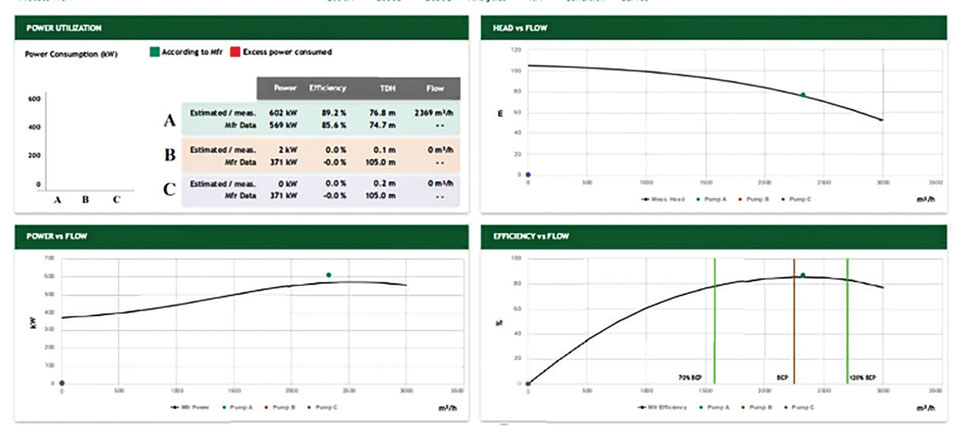
The process industry has been slow to adopt digitalized solutions. It is stuck in a wait-and-see type of scenario, trying to determine the best solution and what is best for its facilities. The wave of potential industrial internet of things (IIoT) options are multiple and could provide viable cost-saving solutions to customers. The key is to step off the sidelines and take the leap.
Vibration Monitoring Is Only a Starting Point
In today’s environment, there is a lot of attention given to vibration monitoring of pumps and other rotating equipment. There are benefits to be gained by monitoring vibration. Pumps are vital pieces of process machinery and, too often, they are the least monitored equipment in many process facilities.
In numerous operations, pumps are run to failure and repair, and replacement costs are extreme. Catching bearing damage early can minimize repair costs and the extent of the repairs can be less extensive and time consuming. Also, process downtime can be minimized.

(Images courtesy of Flowrox)
Heightening Pump Monitoring
One United States steel company began an effort to improve pump performance and extend pump life. A typical steel mill consumes 35,000 gallons of water to produce 1 ton of steel. This steel company was replacing $80,000 pumps annually. Under normal conditions a typical process pump should be able to survive five to 10 years. The steel company wanted to monitor vibration along with some other key issues.
First, the steel company wanted the ability to visualize if the pump was running on or close to the manufacturer’s pump curve. The existing control system lacked analytics that would allow them to monitor pump curve performance. They also wanted to monitor energy consumption.
Other new instruments were installed to analyze cavitation, vibration, impeller wear, pump suction starvation and energy consumption of each individual pump.
The mill has more than 250 large centrifugal pumps with 750-horsepower motors. Monitoring energy consumption of each pump can save energy.
A 3D image of the pumps and several metrics that were being analyzed was developed. If measured variables exceed a certain band of what is considered normal operation, alarms can be triggered to key personnel at the steel mill that a certain pump requires attention.

Brand vs. Brand Monitoring
With precise monitoring, each pump can be analyzed based on its own energy consumption. It can be quickly determined which pump runs with the highest degree of energy efficiency.
With different brands of pumps, consumers can begin to monitor brand versus brand performance and determine which is more energy efficient. Pump faults also can be monitored, and users will have information at hand to understand which pump operates the most trouble-free and with the lowest number of repairs.
Knowing which brand of pump has the least total cost of ownership will become clear for all decision-makers. Of course, to perform true, unbiased analysis, each pump should be new when analysis begins and process conditions for each pump should be identical. Exact process conditions are often difficult to duplicate in process environments, but data will allow pump owners to be better prepared in evaluating one brand versus another.

Pump Curve Analysis & BEP
A pump that is run off the manufacturer’s pump curve and far from the best efficiency point (BEP) is under constant stress, leading to damaging vibration and wear. During startup, it is normal that a pump runs off the pump curve temporarily, but if it runs there daily for long periods, undesirable damage will be done to the pump.
In the steel mill example, the mill requires more water for cooling in the summer months. In the winter, much less water is consumed. This steel mill was accustomed to running two pumps during summer months and having a third pump as a standby. However, during the winter months they continued to run two pumps at much lower flow rates. This created a situation where both pumps were run far from their pump curve and very far from the BEP. So, these two pumps were constantly under stress and unnecessary wear.
Digital services were employed, and the steel mill gained clear visualization, alarms and monitoring of the pumps’ performance. Following this, it was recommended that one of the pumps be turned off during the winter months.

By running only one pump, that pump operated close to the manufacturer’s pump curve and well within the bell curve of the BEP, optimizing its performance.
Digital services monitoring can extend the total lifetime of the pumps. And, through energy consumption monitoring at the mill, determining the most energy-efficient pump to run under specific circumstances could result in annual savings in excess of $40,000 per year. Since the pumps will spend less time under stress conditions or outside the BEP, repairs should be less frequent, be detected earlier and be less costly.
Some of the ultimate goals are to extend pump lifetime, reduce repairs and maintenance costs.
Digitalization of More Than Pumps
As stated previously, vibration monitoring is a great starting place. But with the right solution, much more can be accomplished with digitalization.
Any brand or any style of pump can be analyzed with digitalization services. One brand can be compared to another brand, and users can determine true, documented cost of ownership.
Pumps are not the only pieces of equipment that can benefit from digitalized services. Conveyors, ball mills, blowers, screens and other types of process machinery and components are all basic examples of equipment that could benefit from digitalized services.

